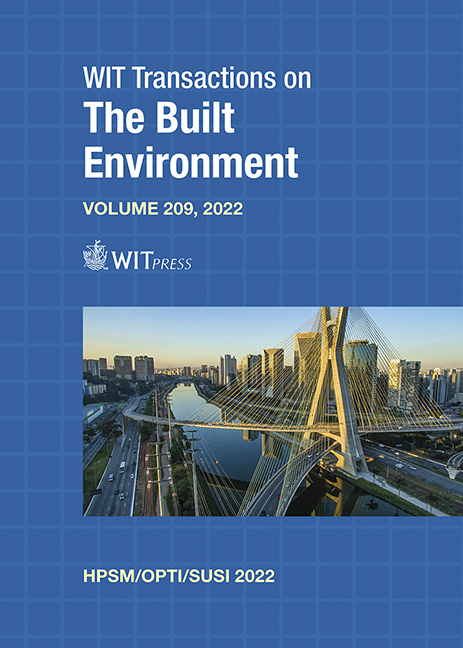COLLAPSE FRAGILITY CURVES FOR SEISMIC ASSESSMENT OF SUPERPLASTIC SHAPE MEMORY ALLOY IN REINFORCED CONCRETE STRUCTURES
Price
Free (open access)
Transaction
Volume
209
Pages
15
Page Range
177 - 191
Published
2022
Paper DOI
10.2495/HPSU220161
Copyright
Author(s)
FARAH JAAFAR, GEORGE SAAD
Abstract
Contemporary building regulations intend to define the standards for design and construction while contemplating safety and serviceability for the occupants. Even though these codes safeguard occupants’ lives under severe earthquakes, damage will occur, inducing stiff repairs and in certain cases building demolition. To address this issue, the design of buildings in seismic regions should aim to be more resilient structures that sustain little or no damage when subjected to extreme loading conditions. This study investigates the use of super-elastic shape memory alloys (SSMA) as partial replacement of steel reinforcement in reinforced concrete (RC) structures to enhance their seismic performance. SSMA is considered a particular type of smart alloys that has the ability to undergo large deformations and return to its original shape after the application of a reverse load, and hence can enhance the performance envelope of the structure. A sensitivity analysis is conducted to assess the efficiency of using SSMA at different locations in reinforced concrete frames. Fragility curves evaluating the seismic performance of an eight-story RC frame reinforced with steel and SSMA at different locations are developed. The results reveal the efficient competence of SSMA reinforced structures at different performance levels as they need greater forces to reach their plastic limit, hence increasing the overall performance of the structure.
Keywords
SSMA, performance-based design, earthquake, fragility curves




